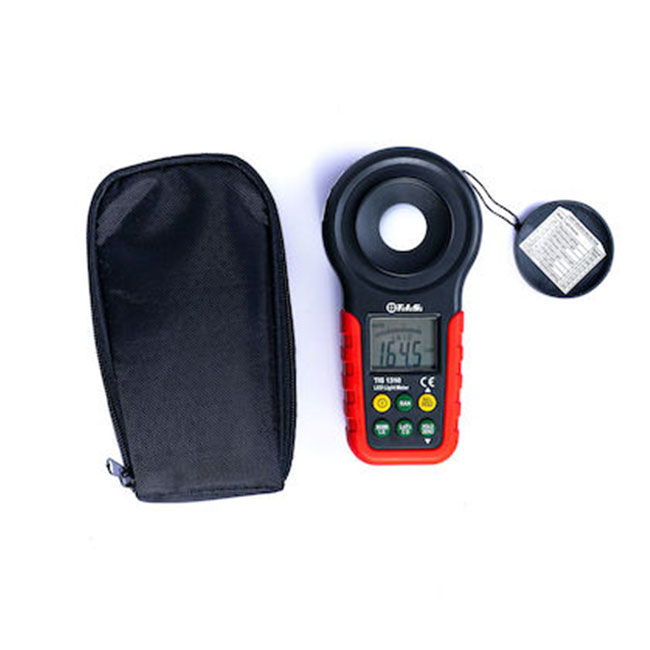We measure light intensity in order to understand whether a particular light source provides sufficient light for an intended application. This can be for safety reasons, to ensure accuracy or to ensure that energy is not being wasted.
How is light measured?

To measure light we use a metric called ‘illuminance’, and this gives us the level of light intensity in a given space. Illuminance is measured in ‘lumens’ which is a unit of measure used to quantify the amount of visible light the human eye can see. A light bulb, for example, has the amount of lumens it produces indicated on the package. So a higher lumen output will mean a brighter light with a higher intensity, and a lower lumen output will produce a dimmer light and a lower light intensity.
So when we are looking at the brightness of a light source we are looking for lumens rather than wattage. For a light bulb, the wattage is indicating the energy consumption of the light bulb, not its brightness.
What is Lux?
Lux is a unit of measure used to indicate the number of lumens falling either on a square foot (known as foot-candles) or on a square metre (known as lux) of a given surface. So if you have a light source which emits 1000 lumens and these are spread over a surface measuring one square metre, you would have an illuminance of 1000 lux. However, if you spread the light over a larger surface area the illuminance would not increase exponentially, as we know, the same light over a larger surface actually gets dimmer, so the illuminance would decrease.
How are LED lights different?
Most workplaces or commercial environments use one of three types of light source; incandescent lights, fluorescent lights or LED lights. LED lights are now the most common type because they are energy efficient, have a better longevity and are therefore better value for money, and they are also safer. However, LED lights produce a white light which is different to incandescent and fluorescent lights, because it is produced through a mixture of red, green and blue LEDs.
What is a LED LUX Light Meter?
A standard LUX meter cannot measure LED light illuminance because it can only measure white light, and LEDs contain more blue light wavelengths and other colours. So to measure LED light as well as all other light sources, you need a specialised LED LUX light meter.
- A handheld device used to measure and verify light levels in different environments
- Contains a sensor which measures the light falling on it and converts it to an electrical signal which gives a digital reading of the illuminance
- This light meter can be calibrated which means you always get an accurate reading and hence a light meter is better than using human judgement as people’s sight ability can vary
- A specialist LED LUX Light Meter adjusts its settings and corrects errors using calculations to ensure that the Lux of an LED light source is displayed accurately
How to measure LUX and LED lights
Using a proper LED LUX Light Meter enables the user to identify and select an optimal light intensity for a given environment:
- Place the meter on a flat surface to ensure a stable result and also in a position that is most representative of someone using that space
- Measure the ambient light level by turning off the light source to establish and record a baseline measurement
- Turn on the light source and take a measurement when the light has achieved full brightness and full distribution
- Note the differential by subtracting the ambient measurement from the illuminated light measurement. This ensures you are recording the amount of light that an existing light source produces
- Check other areas of the room to ensure there is consistency, such as in corners or areas away from windows and natural light.
LUX meter video demonstration
Below is a video on our TIS 1310 product - a LUX / LED Light Meter:
Please note that this section is for information purposes only. Anyone using equipment referred to in this section must be suitably qualified and/or experienced within the respective field. If in doubt before use, please consult a qualified electrician or engineer & thoroughly read all instruction booklets.